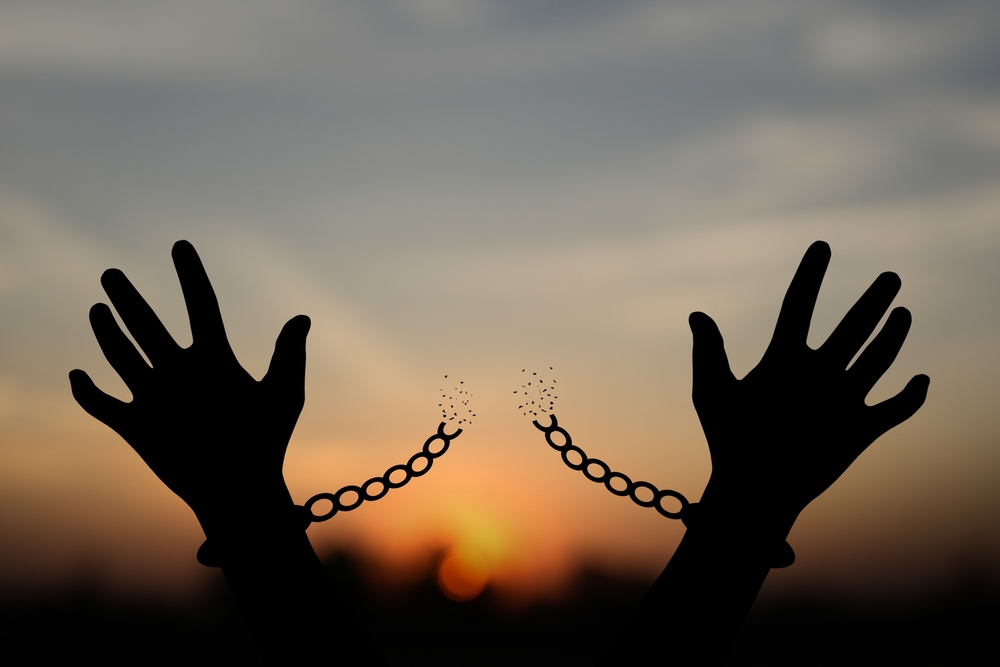Opinion
Written By: Clair Houldsworth , Guest Contributor
The world is changing rapidly right now. Long standing alliances between countries have gone array, countries who traditionally don’t spend much on military are reconsidering their priorities, and news of tariffs and changing immigration policies are dominating the headlines. This is all centered around the rapid changes that the United States President, Donald Trump, is implementing in the country referred to, in their national anthem, at least, as ‘the land of the free’. In an America that seems more divided than ever, many people are questioning whether or not its citizens are truly as ‘free’ as they (or at least, their leaders) have always claimed them to be. What’s more, some are questioning whether the title of the land of the free belongs elsewhere now – perhaps a more fitting title for the European Union. So, is the United States of America still the land of the free, or does the European Union better suit the name?
What Constitutes Freedom?

This topic is, by nature, a highly personalized one based on individual opinion. Where that opinion begins is one’s actual, personal definition of freedom. There are various definitions of freedom in many different dictionaries. According to the Cambridge Dictionary, there are two principal definitions of freedom, at least that aren’t referring to freedom after imprisonment or slavery. These two definitions are as follows:
- the condition or right of being able or allowed to do, say, think, etc. whatever you want to, without being controlled or limited
- a right to act in the way you think you should
In terms of the words written in the United States Declaration of Independence, freedom refers to the rights of each individual to life, liberty, and the pursuit of happiness. Depending on your point of view, this will affect whether or not you think there is more freedom to be found in the United States of America or in one of the 27 countries in the European Union (or 44 countries on the European continent). Let’s break it down between these three categories: Life, Liberty, and The Pursuit of Happiness, and weigh them against the above-mentioned definitions of freedom.
1. Life

The first of the words that every kid in America recites regularly at school is life. Or, more completely, the right to life. What exactly does that mean? In measurable items, you can look at it in terms of safety, general life expectancy, and the healthcare systems in place to look after you when you are sick, so, you know, you can keep on living.
Let’s first look at safety. As of 2020, the homicide rate (aka murder) per 100,000 people in the United States was 6400. In Europe, by contrast, this number is 2400, and in the UK even lower – just 1000 per 100,000 people. The United States sits in the top 60 of intentional homicides, whereas European countries are not even in the top 100. No matter what statistics you look at, crime, and in particular, violent crime, is just more of a threat in the United States. This threat is worse if you are a visible minority, and largely has to do with less restrictive gun laws and access to automatic weapons.
Next, let’s look at healthcare. Europe stands out with its universal healthcare systems, which are the norm across various countries. This has resulted in higher life expectancies, lower infant mortality rates, and fewer deaths from treatable diseases compared to the US. Though the US has undoubtedly some of the best, most advanced healthcare technology and facilities in the world, the problem is access. The US struggles with unequal access to healthcare, high costs, and declining life expectancy in recent years due to various factors such as the opioid crisis and obesity, all on top of the already fairly high rate of homicide.
In terms of life expectancy, the US has the lowest life expectancy among large, wealthy countries. Life expectancy in Europe varies by country but has an average of 81.5 years. In the United States, the average life expectancy sits at 77.5 years. This all has to do with the above-mentioned problems: Disease rates, homicides, and access to healthcare. On top of that, the US tends to have worse pollution, poorer diet and lifestyle, and less regulation of substances than European nations, all of which contribute to its lower life expectancy.
Verdict: Europe’s focus on equity and prevention provides better outcomes for “life,” making it a strong contender in the aspect of providing a healthy and safe environment for its citizens. While the right to life, aka healthcare, safe areas to live, and life expectancy, do exist in the United States, one can argue that these are privileges afforded to the country’s wealthiest citizens and are all but absent for everyone else. This begs the question: If only some of a country’s citizens have the “right to life” as it has been defined here, is the country truly ‘free’? In other words, if you have the right to act as you want (aka, seek healthcare, live in a safe neighborhood, live a long, healthy life) but you don’t have the capacity or access to what you need to do so, are you truly free?
2. Liberty

Let’s move on to the second aspect of ‘freedom’: Liberty, as in your personal freedoms, rights, and justice. This, again, depends on your point of view. Do you look at it as hyper-individualized freedoms, rights, and justice? Or do you look at this as a collective: We either all have the same freedoms, rights, and justice, or we don’t have true ‘liberty’.
Europe demonstrates a strong emphasis on civil liberties, providing freedom of speech, press, and religion with some limitations. In the EU and in most European countries, they have much stricter and more heavily enforced laws on hate speech. Again, depending on your outlook, you can either look at this as a restriction of liberty or as an enhancement. You may say that it is restrictive because it prevents you from saying absolutely anything you want online etc. Or, you may look at it as a safety for everyone: This law protects people from harassment, bullying, racial slurs, and speech that could be otherwise considered aggressive, violent, or dangerous. For example, in France, you can go to jail just for posting or commenting on anything online that can be seen as in favor of terrorism. In Europe, there are also rights such as the right to an abortion. However, there are more restrictions as to religious representation in schools, gun ownership, and medical euthanasia (aka medical death).
In comparison, the US shines in individualist freedoms and constitutional rights. The earning potential in the US is, in general, higher than in Europe, with generally higher salaries in many jobs (though not all). Despite this, the US struggles with a massive prison population, racial inequality in the justice system, and limitations on economic freedom due to the lack of basic support systems. On the other hand, they have much less restrictive rights in other areas, such as the right to bear arms. Many of the rights and freedoms of Americans, however, are dependent on the state they live in. This includes transitional therapies, assisted death, drug regulations, and more.
Verdict: The culture in the US emphasizes personal rights and freedoms, but lacks the actual systems and, frankly, cultural values, to ensure that all citizens receive them. The culture is primarily based on a ‘grind’ culture that praises working long hours, prioritizing work over family, health, and life, and forces its citizens to ‘earn’ or fight for their rights instead of creating a system that provides people with the support and balance they need. Europe provides more practical liberty through its focus on reducing economic desperation and improving access to essential services for all citizens. It’s hard to say that Americans have more liberty than Europeans when they are chained to their desks for 10 hours a day while many Europeans are out taking their second, third, or even fourth vacation of the year.
3. Pursuit of Happiness

Finally, we arrive at the last of the three: The pursuit of happiness. What does this mean? Generally, this refers to quality of life, work-life balance, and social support. Finally, it begs the question: Who, in general, is happier: The average American citizen or the average European?
Europe also has an array of social safety nets, including free or very low-cost university, unemployment benefits, and maternity leave. Many European countries lead the charge in terms of vacation days, sick leave, and more. The culture, as well, is very much based on actually taking your vacation days – your boss will actively remind you and encourage you to take them, as it is a requirement by law in most European countries. For example, in France the average number of vacation days are 20-30, and when you are sick you simply stay home. Sick days don’t have a limit, and they don’t count towards vacation. The European continent also maintains lower incarceration rates and prison systems that focus on rehabilitation to reduce repeat offenders.
In general, Europe offers generous paid vacation, sick leave, and parental leave, shorter workweeks, and strong public transportation. These things ultimately contribute to more leisure time, lower stress levels, and greater job security for its citizens. On the other hand, the US has a cultural emphasis on ambition and innovation, a higher average income, and more consumer choice. That being said, it falls short in federal mandates for paid vacation or maternity leave, leading to longer work hours and a “live to work” culture that can result in burnout. Most women don’t receive any form of maternity leave, some jobs are known for being underpaid (for example, public school teachers, especially in poorer districts), and women and other minority groups struggle to fight for equal rights versus those of the wealthy, white male population of the country.
According to the World Happiness Report, the United States ranks 24th, down from 16th in 2022. Of the top 15 countries, 10 of them are European. Interestingly enough, in the happiness factor marked “freedom” – what this whole debate is about – the US ranked shockingly low, coming in at number 115. Meanwhile, only four countries that are part of the European continent fell behind the United States in this marker.
Verdict: Europe’s support for a balanced, lower-stress path to happiness contrasts with the US’s emphasis on opportunity at a higher personal cost. While it is much too simplistic to say “Europeans are happier/have an easier path to happiness than Americans”, it certainly seems like the barriers in the pursuit of happiness are not the same.
The Bottom Line

When measured by outcomes rather than ideals, Europe appears to have quietly delivered what the US promises in many measurable ways. Europe’s emphasis on stability and foundational support has led to tangible benefits for its citizens, and not only the wealthiest percentiles. The US’s focus on freedom from government interference, by contrast, has resulted in different strengths, but with some notable shortcomings. Ultimately, Europe’s commitment to life, liberty, and the pursuit of happiness has made it a land where these ideals are arguably more structurally supported and guaranteed for all citizens. The statistics don’t lie, so perhaps the United States needs to start thinking of a rebrand.
Read More: When Did It Become Acceptable For Americans With Mental Illnesses To Freeze To Death? – Opinion
